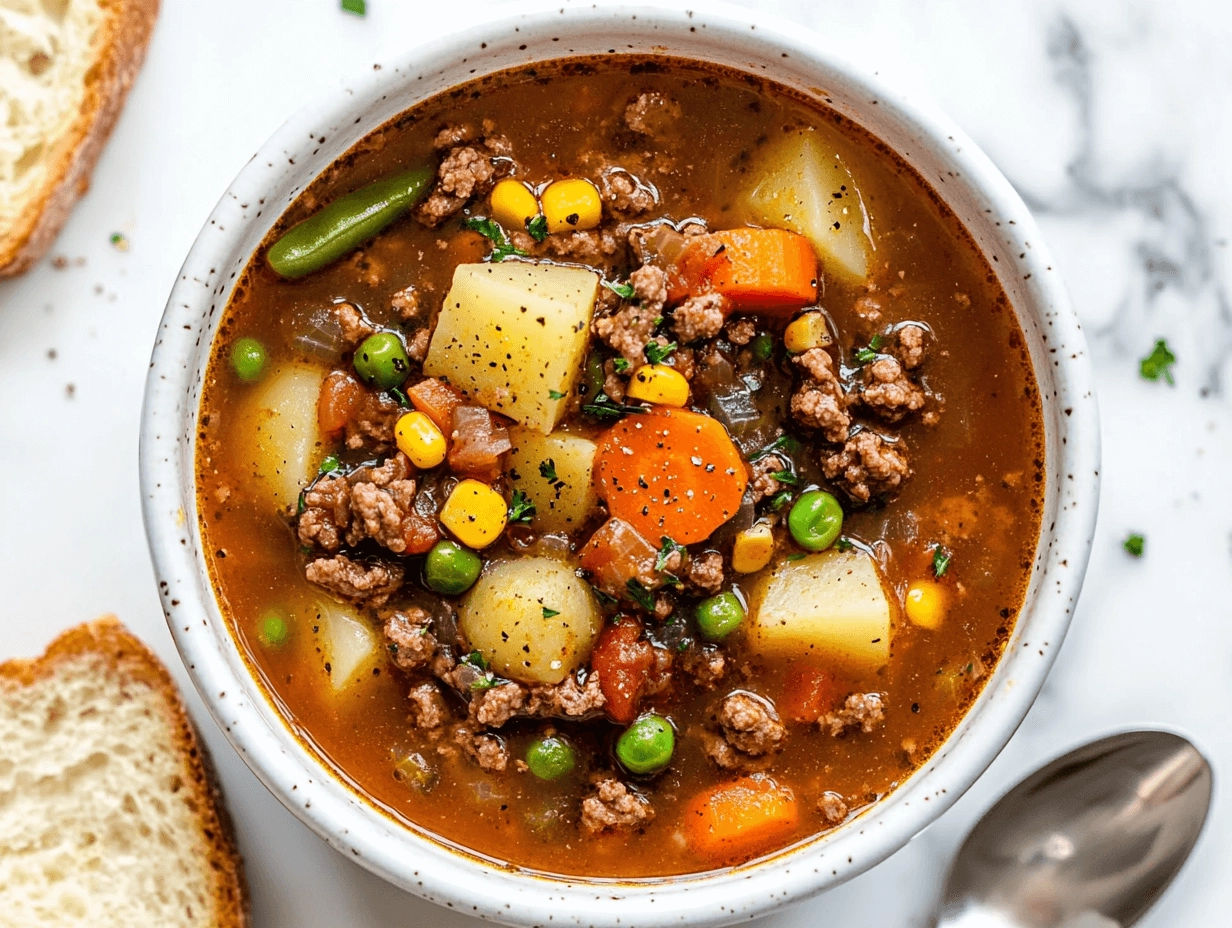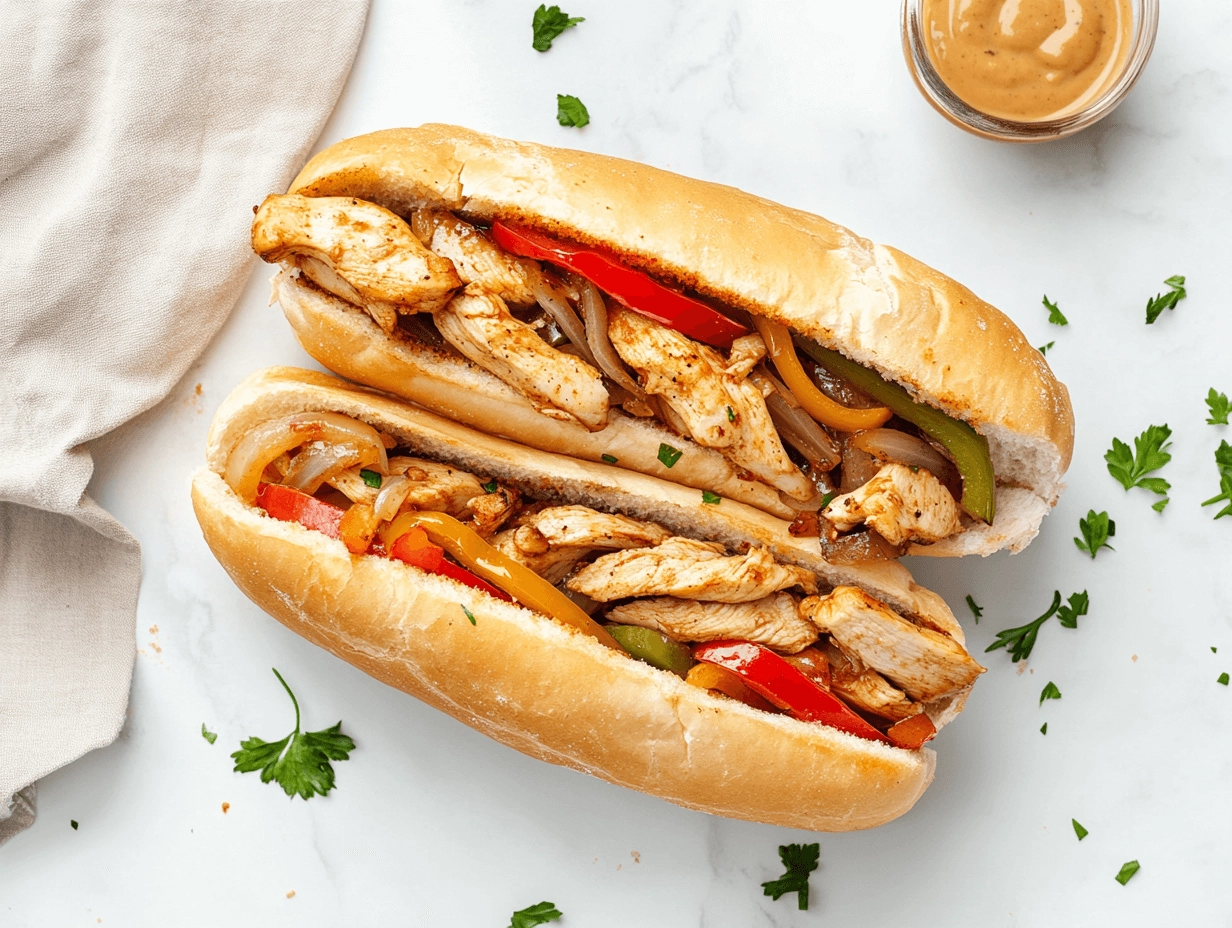baking eggs for sandwiches are an essential part of any breakfast sandwich, providing protein, richness, and structure. However, cooking eggs perfectly can be a challenge, especially when making multiple sandwiches at once. Baking eggs for sandwiches is a time-saving, efficient, and foolproof method that delivers consistent results. Unlike frying or scrambling, baking eggs for sandwiches in the oven ensures even cooking, a uniform shape, and minimal cleanup. Whether you’re preparing breakfast for a busy morning, meal-prepping for the week, or feeding a large family, mastering the technique of baked eggs will revolutionize your morning routine.
This ultimate guide will walk you through everything you need to know about baking eggs for sandwiches. From choosing the best ingredients and baking techniques to troubleshooting common mistakes and optimizing your meal prep, you’ll discover how to create delicious, fluffy, and perfectly cooked eggs every time.
Table of Contents
Discover more delicious recipes and ideas by visiting our homepage!
Why baking eggs for sandwiches?
baking eggs for sandwiches instead of cooking them on the stovetop provides numerous benefits that make the process easier and more efficient.
1. Time-Saving & Batch Cooking
Rather than standing over a hot pan and flipping individual eggs, you can bake an entire batch at once. This makes it perfect for meal prep or cooking for a large group.
💡 Example: If you’re preparing breakfast for a family of five, baking eggs for sandwiches in the oven means everyone gets a hot sandwich at the same time instead of waiting for individual eggs to cook.
2. Consistent Texture & Shape
Baked eggs maintain a uniform size and shape, ensuring that every sandwich has the same fluffy, evenly cooked egg layer. Unlike stovetop cooking, where eggs can spread out unevenly, baking guarantees perfectly portioned servings.
3. Hands-Free Cooking with Less Mess
Since oven-baked eggs require minimal monitoring, you can focus on assembling other ingredients while they cook. Additionally, using parchment paper or non-stick spray reduces cleanup time, making it a hassle-free process.
Essential Ingredients baking eggs for sandwiches
To create the perfect baked eggs for sandwiches, start with the right ingredients.
1. Eggs
- Large eggs work best for consistent portion sizes.
- Organic or pasture-raised eggs enhance flavor and nutrition.
2. Seasonings
- Salt & pepper – Basic but essential.
- Garlic powder or onion powder – Adds depth of flavor.
- Paprika or chili flakes – Optional for a spicy kick.
3. Optional Additions
- Shredded cheese – Cheddar, mozzarella, or feta work well.
- Diced vegetables – Spinach, mushrooms, or bell peppers add texture.
- Cooked meats – Bacon, sausage, or ham for extra protein.
4. Equipment
- 9×13-inch baking dish – Ideal for batch cooking.
- Non-stick spray or parchment paper – Ensures easy removal.
- Whisk or fork – For mixing ingredients.
How to baking eggs for sandwiches

Follow this step-by-step guide to bake eggs that are perfectly cooked, easy to slice, and ideal for assembling into sandwiches.
Step 1: Preheat the Oven
Set your oven to 350°F (175°C). This temperature allows eggs to cook evenly without becoming rubbery or overcooked.
Step 2: Prepare the Baking Dish
- Grease a 9×13-inch baking dish with non-stick spray or butter.
- For extra convenience, line the dish with parchment paper.
Step 3: Whisk & Season the Eggs
- Crack 12 eggs into a bowl.
- Add ½ cup of milk or cream for a fluffier texture.
- Season with salt, pepper, and any additional spices.
- Whisk until smooth.
Step 4: Pour & Bake

- Pour the egg mixture into the prepared baking dish.
- Bake for 18-22 minutes, or until the eggs are set.
- Check for doneness by gently shaking the pan—if the center is firm, they’re ready.
Step 5: Cool & Slice

- Allow the eggs to cool for 5 minutes.
- Cut into squares or circles to fit your sandwich bread.
- Place directly onto English muffins, bagels, croissants, or toast.
How Long Do Eggs Cook in the Oven at 350°F?
Eggs typically take 18-22 minutes at 350°F (175°C). However, the cooking time may vary based on:
- Dish Size – A deeper dish requires more time.
- Added Ingredients – Cheese or vegetables can increase baking time.
- Oven Variations – Some ovens run hotter or cooler than expected.
What Temperature Is Best baking eggs for sandwiches?
The ideal temperature depends on your texture preference:
- 300°F (150°C) – Soft & custardy eggs.
- 350°F (175°C) – Fluffy and firm eggs.
- 375°F (190°C) – 400°F (200°C) – Slightly crispy top layer.
For sandwiches, 350°F (175°C) is the best balance between structure and moisture.
Is It Safe to Bake Eggs in the Oven?
Yes! baking eggs for sandwiches in the oven is completely safe as long as you follow these guidelines:
1. Use Fresh, High-Quality Eggs
- Check expiration dates before baking.
- Discard eggs with odd smells or unusual textures.
2. Cook to the Right Temperature
- The USDA recommends cooking eggs to an internal temperature of 160°F (71°C).
- Use a kitchen thermometer to confirm doneness.
3. Prevent Overcooking
- Overbaked eggs become rubbery and dry.
- Remove from the oven as soon as they are fully set but still soft.
How Long Does It Take for a Raw Egg to Cook in the Oven?
Baking raw eggs in the oven requires precise timing and temperature control to achieve the perfect consistency. Generally, baking times vary depending on the dish size, oven type, and added ingredients.
1. Baking Time Based on Cooking Method
- Whole eggs in muffin tins – 12-15 minutes at 350°F (175°C).
- Eggs in a 9×13 baking dish – 18-22 minutes at 350°F (175°C).
- Eggs baked in ramekins – 15-18 minutes at 375°F (190°C).
- Hard-baked eggs in the shell – 25-30 minutes at 325°F (163°C).
To check for doneness, gently press the center of the baked eggs. If they are firm and no longer jiggly, they are fully cooked.
What Is the Role of Eggs in Baking?
baking eggs for sandwiches are a fundamental ingredient in baking, providing structure, moisture, and richness to a variety of dishes. When used in baking eggs for sandwiches, they serve multiple functions.
1. Eggs Provide Structure
Eggs contain proteins that coagulate when heated, helping the baked eggs maintain a firm yet soft consistency that makes them ideal for sandwiches.
2. Eggs Enhance Flavor and Moisture
The natural fats in egg yolks contribute to a rich, creamy texture, ensuring the eggs don’t dry out during baking.
3. Eggs Bind Ingredients Together
When combined with cheese or vegetables, eggs act as a binding agent, ensuring that all ingredients hold together neatly within the sandwich.
How Do You Keep Eggs from Drying Out in the Oven?
Avoiding dryness is crucial to ensuring moist, fluffy baked eggs. Follow these techniques to maintain the perfect texture.
1. Use Dairy for Creaminess
- Adding milk or cream to the egg mixture enhances softness and moisture.
- A ratio of ½ cup of milk per 12 eggs is ideal for a smooth, custardy texture.
2. Control the Baking Time
- Overbaking leads to dryness. Remove eggs from the oven as soon as they are set.
- For extra moisture, cover the eggs with foil during baking to trap steam.
3. Incorporate Moisture-Rich Ingredients
- Adding shredded cheese, cooked spinach, or diced tomatoes helps retain natural moisture.
- A light drizzle of olive oil or melted butter over the top before baking adds richness.
FAQs: Everything You Need to Know About Baking Eggs for Sandwiches
1. How long do eggs cook in the oven at 350 degrees?
baking eggs for sandwiches at 350°F (175°C) typically takes 18-22 minutes when using a large baking dish. However, cooking time depends on the size of the portions and the baking method:
- Whole eggs in muffin tins – 12-15 minutes
- Eggs baked in ramekins – 15-18 minutes
- Eggs in a casserole-style dish – 20-25 minutes
- Hard-baked eggs in the shell – 25-30 minutes at 325°F (163°C)
To check for doneness, gently shake the dish—if the center is set and no longer jiggles, the eggs are ready. Using a food thermometer to confirm an internal temperature of 160°F (71°C) is recommended for food safety.
2. What temperature is best baking eggs for sandwiches?
The ideal temperature for baking eggs for sandwiches depends on the texture you want:
- 300°F (150°C) – Soft, custardy eggs
- 350°F (175°C) – Fluffy, firm but tender eggs (best for sandwiches)
- 375°F (190°C) – 400°F (200°C) – Firmer eggs with a slightly crispy top
If you want eggs that hold their shape well for meal prep, 350°F (175°C) is the best balance of texture and structure.
3. Is it safe to bake eggs in the oven?
Yes! baking eggs for sandwiches in the oven is completely safe as long as they reach the proper internal temperature. According to USDA guidelines:
- Eggs should be cooked to at least 160°F (71°C) to be safe for consumption.
- Use fresh, high-quality eggs and discard any that have an unusual smell or appearance.
To prevent eggs from overcooking, remove them from the oven as soon as they are set but still slightly soft in the center—they will continue to cook from residual heat.
4. How do I prevent eggs from sticking to the baking dish?
If eggs stick to the baking dish, it can be difficult to remove them cleanly. Here’s how to prevent this:
- Grease the pan well – Use butter, non-stick spray, or oil before pouring in the eggs.
- Use parchment paper – Lining the dish with parchment paper makes cleanup easy and prevents eggs from sticking.
- Silicone baking molds – If using muffin tins, silicone molds are a non-stick alternative that makes egg removal effortless.
If eggs do stick, run a knife around the edges and gently loosen them before lifting.
5. Can I freeze baked eggs for later use?
Yes! Baked eggs freeze well, making them an excellent meal-prep solution. Follow these steps:
- Cool completely – Let the eggs fully cool before wrapping to prevent condensation.
- Wrap individually – Use plastic wrap or foil to prevent freezer burn.
- Store in an airtight container – Place wrapped eggs in a zip-top freezer bag or container.
- Label and date – Eggs can be frozen for up to 3 months.
For best quality, freeze eggs without extra toppings like vegetables, as they release moisture when thawed.
6. How do I reheat baked eggs without drying them out?
Baked eggs can become rubbery or dry if reheated incorrectly. To retain moisture:
- Microwave: Wrap the eggs in a damp paper towel and heat on medium power for 30-45 seconds.
- Oven: Reheat at 300°F (150°C) for 5-7 minutes until warmed through.
- Air Fryer: Set to 325°F (163°C) for 4-5 minutes.
For frozen eggs, thaw them overnight in the fridge before reheating.
7. Can I add vegetables to baked eggs?
Yes! Adding vegetables enhances both flavor and nutrition, but they must be prepared properly:
- Pre-cook watery vegetables – Mushrooms, spinach, and tomatoes should be sautéed first to remove excess moisture.
- Chop finely – Small, evenly cut pieces mix better into eggs and ensure even baking.
- Use firm vegetables raw – Bell peppers, onions, and carrots can be added directly without cooking.
Too many wet ingredients can make eggs runny or unevenly cooked, so use moderation.
8. What’s the best bread for breakfast sandwiches?
Pairing the right bread with your baked eggs ensures the perfect sandwich experience. Here are some great options:
- English muffins – Sturdy, slightly crispy, and holds up well with moist eggs.
- Bagels – Hearty and chewy, ideal for a dense, satisfying sandwich.
- Croissants – Buttery and flaky, adds a gourmet touch.
- Brioche buns – Slightly sweet, soft, and a perfect contrast to savory eggs.
- Whole wheat toast – Healthier option with more fiber and a hearty texture.
For a low-carb alternative, use lettuce wraps or keto-friendly bread.
9. Can I bake eggs in a muffin tin instead of a baking dish?
Yes! baking eggs for sandwiches in muffin tins creates individual egg rounds that fit perfectly into sandwiches. Here’s how:
- Grease the muffin tin well with butter or non-stick spray.
- Crack eggs directly into each cup, or whisk and pour for scrambled-style eggs.
- Bake at 350°F (175°C) for 12-15 minutes or until set.
- Cool for 5 minutes before removing to prevent sticking.
For flavored variations, add cheese, herbs, or pre-cooked bacon to each cup.
10. Can I make baked eggs ahead of time for meal prep?
Absolutely! Meal prepping baked eggs saves time and ensures quick, easy breakfasts throughout the week.
- Storage: Keep cooked eggs in an airtight container in the fridge for up to 5 days.
- Reheating: Use the microwave or oven for a fresh, just-cooked texture.
- Portion control: Pre-slice eggs to fit sandwich bread for easy assembly.
Pair pre-baked eggs with pre-cooked bacon or sausage for a grab-and-go breakfast.
11. Do baked eggs taste different from stovetop eggs?
Yes, baked eggs have a slightly different texture and flavor compared to stovetop eggs:
- Baked eggs are softer, more uniform, and fluffier due to the gentle heat of the oven.
- Fried eggs have crispy edges but require more oil.
- Scrambled eggs are softer but require constant stirring.
If you prefer a firmer texture, bake eggs at 375°F (190°C) for a slightly crispier top.
12. What are some creative variations for baked eggs in sandwiches?
If you want to switch up flavors, try these unique baked egg sandwich ideas:
- Mediterranean Style: Add feta cheese, sundried tomatoes, and spinach.
- Spicy Southwest: Mix in jalapeños, pepper jack cheese, and salsa.
- Breakfast BLT: Layer baked eggs with crispy bacon, lettuce, and tomato.
- Keto-Friendly: Serve baked eggs on low-carb toast or lettuce wraps.
By adjusting seasonings, mix-ins, and toppings, you can create endless variations of baked egg sandwiches!
Final Thoughts

Baking eggs for sandwiches is a simple yet effective technique that makes breakfast preparation quick, efficient, and customizable. By choosing the right baking method, preventing dryness, and storing eggs properly, you can enjoy delicious, fluffy eggs anytime.
Now that you know everything about baking eggs for sandwiches, experiment with different flavors, mea
PrintBaked Eggs for Breakfast Sandwiches
- Total Time: 25-30 minutes
- Yield: 12 egg portions 1x
Description
Baking eggs for breakfast sandwiches is a game-changer! It’s the easiest way to cook perfectly shaped, fluffy eggs for sandwiches, making meal prep a breeze. Unlike frying or scrambling, baking ensures even cooking, a consistent texture, and minimal cleanup. Whether you’re prepping breakfast for the week, feeding a family, or assembling sandwiches in bulk, this method guarantees quick, effortless, and delicious results every time!
Ingredients
- 12 large eggs
- ½ cup milk or heavy cream (for extra fluffiness)
- 1 teaspoon salt
- ½ teaspoon black pepper
- ½ teaspoon garlic powder (optional)
- ½ teaspoon paprika or red pepper flakes (optional)
- ½ cup shredded cheese (cheddar, Swiss, or mozzarella) (optional)
- ½ cup diced vegetables (spinach, mushrooms, bell peppers) (optional)
- Non-stick spray or butter (for greasing)
Instructions
Preheat the Oven:
- Preheat your oven to 350°F (175°C).
2. Prepare the Baking Dish:
- Grease a 9×13-inch baking dish with non-stick spray or butter.
- For easy removal, line the dish with parchment paper.
3. Whisk & Season the Eggs:
- Crack 12 eggs into a large mixing bowl.
- Add milk, salt, pepper, and any additional seasonings.
- Whisk until smooth and well combined.
- Stir in cheese or vegetables, if using.
4. Pour & Bake:
- Pour the egg mixture into the prepared baking dish.
- Bake for 18-22 minutes, or until the eggs are set.
- Check for doneness by gently shaking the dish—if the center is firm, they’re ready.
5. Cool & Slice:
- Allow the eggs to cool for 5 minutes before slicing.
- Cut into squares or use a round cutter for perfect sandwich-sized portions.
Notes
- Meal Prep Tip: Store baked eggs in an airtight container in the fridge for up to 5 days, or freeze for up to 3 months.
- Reheating Instructions:
- From the fridge: Microwave for 30-45 seconds, or bake at 300°F (150°C) for 5-7 minutes.
- From frozen: Microwave for 1.5-2 minutes, or bake at 350°F (175°C) for 15 minutes.
- Creative Variations:
- Add cooked bacon, sausage, or ham for extra protein.
- Use goat cheese or feta for a gourmet touch.
- Add hot sauce, jalapeños, or salsa for a spicy kick!
- Prep Time: 5 minutes
- Cook Time: 18-22 minutes
- Category: Breakfast
- Cuisine: American
Nutrition
- Serving Size: 1 egg portion per sandwich
- Calories: ~100-150 kcal
- Fat: 8-10g
- Carbohydrates: 1-3g
- Protein: 7-9g
Conclusion: Why Baking Eggs for Sandwiches is a Game-Changer
Perfecting the art of baking eggs for sandwiches is more than just a kitchen hack—it’s a transformational technique that simplifies your morning routine while ensuring consistency, efficiency, and unbeatable flavor. Whether you’re preparing breakfast for yourself, a busy family, or meal-prepping for the week ahead, this method ensures that your eggs are always fluffy, evenly cooked, and easy to assemble into sandwiches.
By carefully selecting the right baking temperature, avoiding overcooking, and incorporating moisture-enhancing ingredients, you can create the ideal texture—soft, rich, and never rubbery. Unlike stovetop cooking, which requires constant attention, baking eggs for sandwiches allows for hands-free preparation, giving you more time to focus on other breakfast components or simply enjoy your morning.
Furthermore, baking eggs for sandwiches opens up a world of customization possibilities. Whether you’re a fan of a classic egg-and-cheese sandwich, love a protein-packed version with bacon or sausage, or prefer a vegetarian-friendly option loaded with veggies, baked eggs serve as the perfect base for any combination. The ability to pre-cut, store, and freeze them also means that you can have a quick, nutritious breakfast ready in minutes, making them an ideal solution for busy mornings.
Moreover, meal-prepping baked eggs ensures that you reduce food waste, save money, and maintain control over your ingredients, allowing you to enjoy a healthier, homemade alternative to store-bought breakfast sandwiches. Since they reheat beautifully, you can enjoy the same great taste and texture days or even weeks after baking them.
So, if you’re looking for a fuss-free way to enjoy breakfast sandwiches without the hassle of individually frying eggs each morning, baking eggs for sandwiches is the way to go. It’s a smart, time-saving technique that guarantees perfect results every time. Whether you’re an experienced home cook or just starting out, this method will revolutionize the way you make breakfast sandwiches.
Now that you know the best way to bake eggs for sandwiches, it’s time to put this knowledge into action. Try baking a batch today and experience the convenience, flavor, and simplicity that comes with it. Your future self will thank you every morning when you have ready-to-use, perfectly cooked eggs waiting for you!






1 thought on “Baking Eggs for Sandwiches: The Best Method for a Perfect Breakfast”